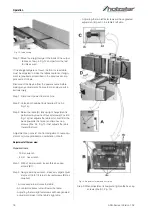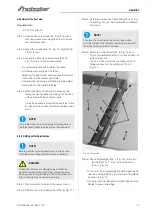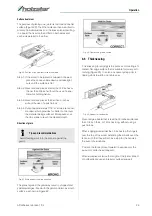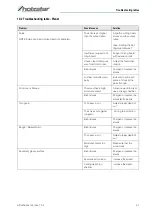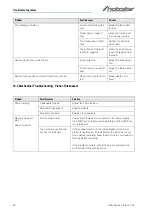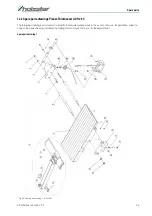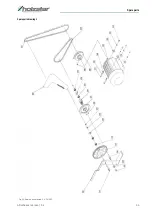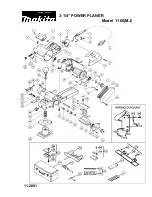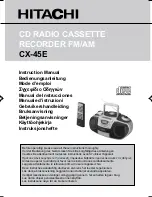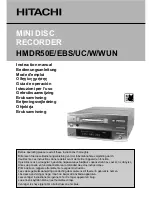
Operation
ADH-Series | Version 1.02
27
Plane alternate sides until the desired thickness is obta-
ined. When half of the total cut has been taken from
each side, the board will have a uniform, moisture con-
tent and additional drying will not cause it to warp.
The depth of cut should be shallower when the work-
piece is wider.
When planning hardwood, take light cuts or plane the
wood in thin widths.
Make a test cut with a test piece and verify the thick-
ness produced.
Check the accuracy of the test cut before working on
the finished product.
Precautions
A planer-thicknesser is a precision woodworking ma-
chine and should be used on quality lumber only.
Do not plane dirty boards; dirt and small stones are
abrasive and will wear out the blade.
Remove nails and staples. Use the planer to cut wood
only. Avoid knots. Heavily cross-grained wood makes
knots hard. Knots can come lose and jam the blade.
Any article that encounters planer blades may be for-
cibly ejected from the planer creating a risk of injury.
Preparing the work
A planer-thicknesser works best when the lumber has at
least one flat surface. Use a jointer to create a flat sur-
face.
Twisted or severely warped boards can jam the planer.
Rip the lumber in half to reduce the magnitude of the
warp.
The work should be fed into the planer in the same di-
rection as the grain of the wood.
Sometimes the wood will change directions in the
middle of the board. In such cases, if possible,
cut the board in the middle so the grain direction is cor-
rect.
Do not plane a board that is less than 6“ long. It is re-
commended that when planning short boards you butt
them end to end to avoid kickback and reduce snipe.
Equipment of the work process
The planer-thicknesser is supplied with planer blades
mounted in the cutter head and infeed and outfeed rol-
lers adjusted to the correct height. The planer feed is
automatic; it will vary slightly depending on the type of
wood.
Preparation:
Feed rate refers to the rate at which the lumber travels
through the planer.
The operator is responsible for aligning the work so it
will feed properly.
Raise or lower the rollercase to get the depth of cut desi-
red.
The surface that the planer produces will be smoother if
a shallower depth of cut is used.
Stand on the side that the handle is attached.
Boards longer than 24” should have additional support
from free standing material stands.
8.9 Planing
Step 1: Position the workpiece with the face to be pla-
ned on top.
Step 2: Turn the planer on.
Step 3: Turn the power feed on.
Step 4: Rest the board end on the infeed roller plate and
direct the board into the planer.
Sep 5: Slide the workpiece into the infeed side of the
planer until the infeed roller begins to advance
the workpiece.
Step 6: Let go of the workpiece and allow the automatic
feed to advance the workpiece.
Step 7: Do not push or pull on the workpiece. Move to
the rear and receive the planed lumber by gra-
sping it in the same manner that it was fed.
Step 8: Do not grasp any portion of the board that has
not gone past the outfeed roller.
Step 9: Repeat this operation on all of the boards that
need to be the same thickness.
DANGER OF ENTANGLEMENT!
There is a danger of entanglement due to the rota-
ting feed rollers! Keep sufficient distance to the
inside of the planer. Use a feeding aid if you want to
push small workpieces into the machine.
CAUTION!
To avoid the risk of injury due to kickbacks, do not
stand directly in line with the front or rear of the pla-
ner-thicknesser.
Summary of Contents for 5904026
Page 57: ...Notes ADH Series Version 1 02 57 15 Notes ...
Page 58: ...www holzstar de ...






